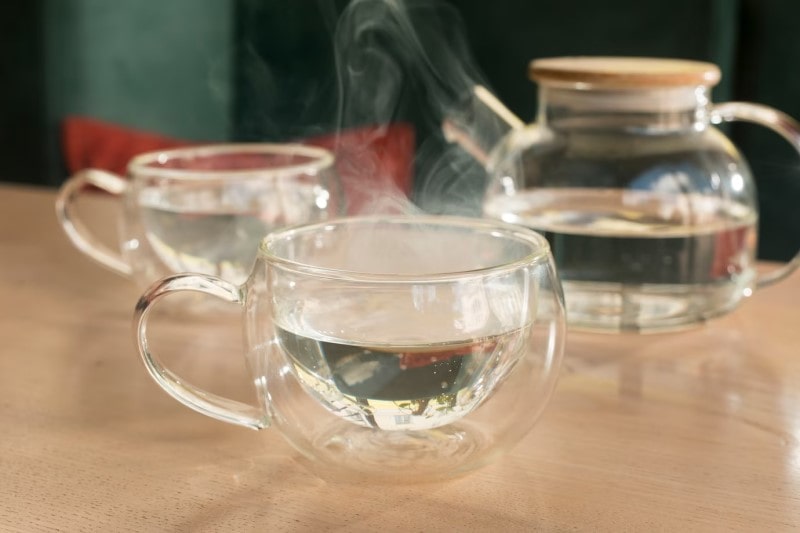Steam therapy has been used for centuries to alleviate various ailments, including respiratory conditions. The idea is that inhaling steam can help loosen up mucus and phlegm in the lungs, making coughing up and breathing easier. However, despite its popularity, the truth about using steam to treat lung problems is more complicated than it seems.
Dr. Jasdeep Sidana, MD, explores the history of steam therapy, its potential benefits and risks, and alternative treatments that may be more effective.
Inhaling the Past: Steam Therapy, From Ancient Roots to Modern Practice
Steam therapy has been used for centuries in various forms. Ancient Greeks, Romans, and Egyptians are credited with the first applications of thermal water baths. Their traditional offerings included mineral-rich spring waters therapeutic chambers, as well as a variety of massage techniques. However, steam inhalation was first popularized in the 17th century. It was prescribed to those suffering from influenza and pneumonia, among other ailments. By the 19th century, hospitals and spas were offering steam inhalation treatment.
Fast forward to the 21st century, steam rooms and saunas are now widely used globally in spas, gyms, and wellness centers, offering many health benefits such as pain relief, improved circulation, and respiration to the users. Modern steam technology is also incorporated into treatments such as chromotherapy, which combines frequency lights with water vapors for even greater effectivity. What began as an ancient ritual has expanded throughout generations into more targeted practices for physical and mental health enhancements, thus emphasizing the lasting presence of steam therapy in our lives today.
Furthermore, steam therapy for lung problems typically involves inhaling steam through a warm, damp cloth held over the face or through a machine that produces a fine mist. Some people even add essential oils or herbs to the water to enhance the therapeutic effects. According to Dr. Jasdeep Sidana, MD, there are also a few types of steam therapies used for lung problems. For example, nebulizers are often used to deliver medication in a mist form, and humidifiers add moisture to the air, which can help to ease congestion and coughing.
The Truth About Steam Therapy for Lung Problems

While steam therapy can relieve lung problems, Dr. Jasdeep Sidana, MD, says it’s essential to understand its limitations and potential risks. Here are a few key points to consider:
- Potential benefits: Inhaling steam can help moisten and soothe the airways, making coughing up mucus and phlegm easier. It can also help to reduce inflammation and clear congestion. However, Dr. Jasdeep Sidana, MD, points out that these benefits are typically short-lived and may not provide significant relief for people with chronic respiratory conditions.
- Limitations: Steam therapy is not a cure for respiratory conditions and may not be effective for everyone. Dr. Jasdeep Sidana, MD, emphasizes that in some cases, steam therapy can make symptoms worse, especially for people with asthma. The steam can irritate the airways and trigger an asthma attack. Additionally, steam therapy can be uncomfortable for some people, as the hot, humid air can make breathing difficult.
- Potential risks: While steam therapy is generally considered safe, there are some risks. For example, if the water is too hot, it can cause burns or scalds. Inhaling steam can also cause dizziness or lightheadedness, especially if the person is sitting or standing in one position for too long. In rare cases, steam therapy can lead to a lung infection or other complications.
In general, Dr. Jasdeep Sidana, MD, stresses that it’s best to use steam therapy under a healthcare professional who can advise on the appropriate temperature, duration, and frequency of treatment.
Alternative Treatments for Lung Problems

While steam therapy may provide some relief for respiratory conditions, Dr. Jasdeep Sidana, MD, isn’t dismissing the fact that other treatments are also worth it.
Here are a few examples:
- Medications: Depending on the underlying cause of the respiratory condition, medications such as bronchodilators or corticosteroids may be prescribed to help relieve symptoms.
- Breathing exercises: Certain breathing exercises, such as pursed-lip breathing or diaphragmatic breathing, can help to improve lung function and reduce symptoms.
- Pulmonary rehabilitation: This comprehensive program includes exercise, education, and support to help people with chronic respiratory conditions manage their symptoms and improve their quality of life.
- Oxygen therapy: For people with severe respiratory conditions, supplemental oxygen may be necessary to help them breathe more comfortably.
Working with a healthcare professional like Dr. Jasdeep Sidana, MD, is essential to determine the best treatment for your specific respiratory condition. In addition, they can help you identify the underlying cause of your symptoms and recommend appropriate treatments.
CONCLUSION
While steam therapy has a long history as a treatment for respiratory conditions, the truth about its effectiveness is more complicated than it seems. While steam therapy may provide some relief for mild respiratory symptoms, it may not be effective for everyone and can even harm some people, such as those with asthma. Thus, it’s essential to understand steam therapy’s potential benefits and risks and use it under a healthcare professional’s guidance.
If you’re struggling with respiratory symptoms, Dr. Jasdeep Sidana, MD, emphasizes the importance of seeking medical advice from a qualified healthcare professional. They can help you identify the underlying cause of your symptoms and recommend appropriate treatments.
